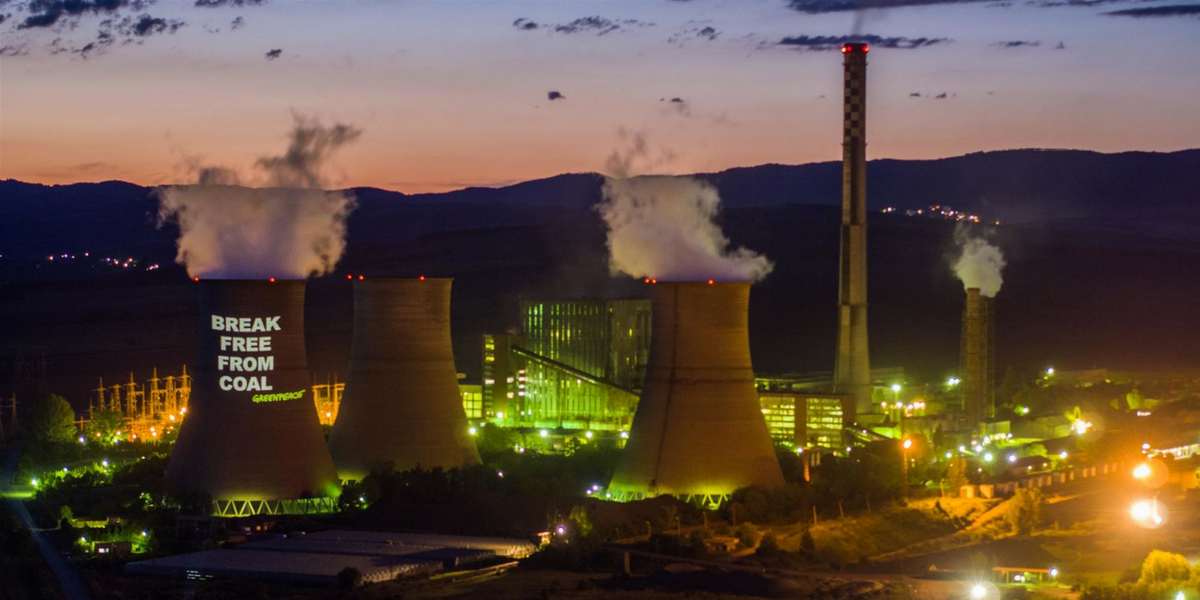In October, the Commission a comprehensive assessment of all NECPs that were submitted by Member States earlier in the year. The plans should outline the pathway to achieving the EU’s collective goal of a 40 per cent reduction of greenhouse gas emissions by 2030 (compared to 1990 levels) by increasing the share of renewables and improving energy efficiency.
Katerina Davidova, National campaigner, Czech Republic | 3 December 2020

Photo by Greenpeace
The European Commission’s analysis of the Czech national energy and climate plan (NECP) supports the critique of local civil society and renewable energy associations, who call the plan’s provisions “unambitious” and the contribution to the joint decarbonisation efforts of the EU “modest”.
But with the EU’s 2030 emissions reduction target currently being updated to at least 55 per cent, the already unambitious Czech NECP will be in dire need of revision.
Main shortcomings of the Czech NECP
The Commissions has identified the most notable shortcomings of the Czech NECP as insufficient ambition for the development of renewable energy – especially solar and wind – in the next decade, as well as insufficient plans for improving the country’s energy efficiency.
While the Commission has recommended that the Czech Republic increases its share of renewable energy in final consumption to at least 23 per cent by 2030, the Czech NECP only counts with a 22 per cent share by that time. This seemingly small difference of one percentage point would actually mean an almost four times faster increase of renewables capacity. According to the Czech Chamber of Renewable Energy, this is far below Czechia’s renewable energy potential, which could be at least twice as high.
This criticism is supported by a recent study that confirms Czechia plans the absolute slowest deployment of renewables in the EU. If the current government’s plan goes ahead, there will be fewer renewable energy sources built during the next decade than were built in the previous one. In 2030, Czechia will have the lowest share of renewable energy of all Member States, and the majority of this share will come from biomass, which is less sustainable than solar and wind.
Another study shows, however, that the country’s renewable energy potential is not as low as its politicians often suggest. According to Ember’s modelling, Czechia could achieve up to 10GW of solar and 4GW of wind by 2030, effectively replacing all of its existing coal capacity. In this way, the Czech NECP seems rather unreasonable, as it does not count with any coal phase out date nor does it set out a framework that could lead to the replacement of uneconomic coal with the cheapest source of energy, renewables.
Insufficient link of recovery funding and climate goals
By relying heavily on biomass to cover its renewable targets, the Czech NECP effectively pushes solar and wind out of the country’s energy mix and thus its eligibility for public financing.
This is exacerbated by Czechia’s plans for the Recovery and Resilience Fund, which would provide the majority of funding to large companies in the electricity and heating sectors at the expense of small and medium sized enterprises, often providers of sustainable, renewable energy solutions. Similarly, there is insufficient support planned for municipalities, which could be pioneers of community energy development in Czechia.
The NECP also does not set a date for a phase out of fossil fuel subsidies, meaning that if the recovery funding is spent in line with the existing NECP, there is a risk that EU money goes into harmful projects that will end up increasing Czechia’s emissions. There are considerable doubts that the draft National Recovery Plan complies with the 37 per cent climate investment criterion.
As it stands, the NECP is a hindrance to more ambitious climate policy, as it does not provide any guidance for energy efficiency improvements and substantial renewable energy deployment. Once the EU and its Member States agree on increased 2030 targets, the Czech NECP will need a thorough revision to address its shortcomings. The Recovery and Resilience Fund should be seen as an opportunity to get a head start for the necessary decarbonisation of Czechia’s energy systems, yet in its current form it also falls short of this task.
Never miss an update
We expose the risks of international public finance and bring critical updates from the ground – straight to your inbox.
Institution: EU funds
Theme: Energy & climate
Location: Czechia
Project: Fossil gas
Tags: Czechia | EU funds | European Green Deal | NECP
